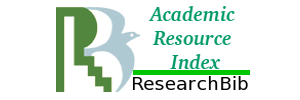Abstract
China is currently promoting institutional change and restructuring to maintain and even accelerate its current level of economic progress, despite the fact that the globe as a whole is experiencing economic difficulties. China is putting in more efforts to innovate in response to the growing importance of innovation. Transform from a factory that creates low-quality items into a factory that creates trimming goods that are distributed all over the globe. With a diverse selection of specialized initiatives and programs, both the state and federal governments, as well as the regional governments, have made significant investments to foster creative regional and statewide development. The emphasis of these positive policy efforts has been on China's small and medium-sized companies (SMEs), which account for the vast majority of the country's firms and constitute the country's industrial base's central focus. The SME sector is increasingly driving China's economy. Historically, people have perceived small and medium-sized firms (SMEs) as low-tech and resource-intensive manufacturers. The expansion of innovative small and medium-sized enterprises (SMEs) throughout China's manufacturing industries is driving the transformation of the country's innovation system, resulting in a substantial shift in market structures and links. This is causing significant alterations to market structures and relationships.
References
- Adel G. The Venture Capital Contribution to the Financing of Entrepreneurial Projects: Case of Tunisian Risk Capital Investment Company (SICAR). Journal of Internet Banking and Commerce. 2016 Nov 1;21(S5):1.
- Abe M, Troilo M, Batsaikhan O. Financing small and medium enterprises in Asia and the Pacific. Journal of Entrepreneurship and Public Policy. 2015 Apr 13;4(1):2-32. https://doi.org/10.1108/JEPP-07-2012-0036
- Banwo AO, Du J, Onokala U. The determinants of location specific choice: small and medium-sized enterprises in developing countries. Journal of Global Entrepreneurship Research. 2017 Dec;7:1-7. https://doi.org/10.1186/s40497-017-0074-2
- Hisrich RD, Petković S, Ramadani V, Dana LP. Venture capital funds in transition countries: Insights from Bosnia and Herzegovina and Macedonia. Journal of Small Business and Enterprise Development. 2016 May 16;23(2):296-315. https://doi.org/10.1108/JSBED-06-2015-0078
- Çoban S, Selçuk E. The effect of mind mapping technique on students’ achievements in music lesson and on their attitudes towards the mind mapping technique. Egitim ve Bilim. 2017;42(190). http://dx.doi.org/10.15390/EB.2017.6856
- Rusu D, Sandu D. Entrepreneurship and Ethics in Small And Medium Size Enterprises: Literature Analysis. In Proceedings of the International Management Conference 2020 (Vol. 14, No. 1, pp. 688-695). Faculty of Management, Academy of Economic Studies, Bucharest, Romania. https://doi.org/10.24818/IMC/2020/03.21
- Harvey C. Ethical emotional encounters: Contemplating challenges in psychoanalytically informed research. Psycho-analytic Psychotherapy in South Africa. 2017 Jun 1;25(1):34-66.
- Dušátková MS, Zinecker M, Meluzín T. Institutional determinants of private equity market in Czech Republic. Economics & Sociology. 2017 Oct 1;10(4):83-98. https://doi.org/10.14254/2071-789X.2017/10-4/7
- Fusch P, Ness L. Are We There Yet? Data Saturation in Qualitative Research. Walden Faculty and Staff Publications [Internet]. 2015 Feb 1;20(9):1408–16. https://doi.org/10.46743/2160-3715/2015.2281
- Osei A, Yunfei S, Appienti WA, Forkuoh SK. Product innovation and SMEs performance in the manufacturing sector of Ghana. British Journal of Economics, Management & Trade. 2016 Oct 29;15(3):1-4. https://doi.org/10.9734/BJEMT/2016/29906
- Dong JC, Zhu LL, Wang B, Dong Z, Li XT. The evaluation of financing efficiency of China’s stock market. Mathematical Problems in Engineering. 2016;2016(1):3236897. https://doi.org/10.1155/2016/3236897















